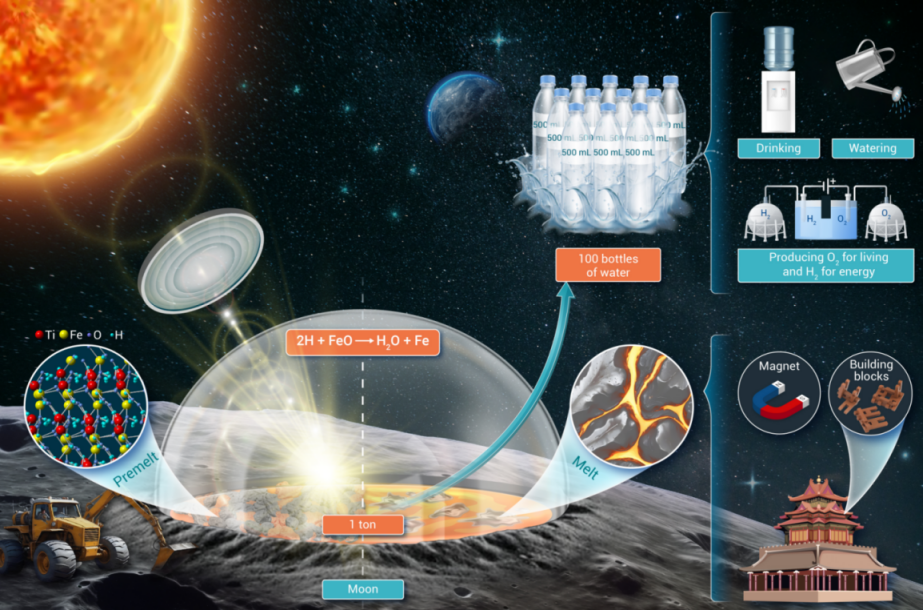
Water plays a crucial role in human survival on the lunar surface, thus attracting extensive research attention. Prof. WANG Junqiang’s team at the Ningbo Institute of Materials Technology and Engineering (NIMTE) of the Chinese Academy of Sciences (CAS) has recently developed a new method of massive water production through reaction between lunar regolith and endogenous hydrogen.
Research results of previous lunar explorations, like the Apollo and Chang’E-5 missions, have revealed the widespread presence of water on the Moon. However, the water content in lunar minerals is extremely low, ranging from 0.0001% to 0.02%. It remains challenging to extract and utilize water in situ on the Moon.
“We used lunar regolith samples brought back by the Chang’E-5 mission in our study, trying to find a way to produce water on the Moon,” said WANG.
The study revealed that when the lunar regolith is heated above 1,200 K with concave mirrors, one gram of molten lunar regolith can generate 51–76 mg of water. In other words, one ton of lunar regolith could produce more than 50 kg of water, which is equal to about a hundred 500-ml bottles of drinking water. This would be enough drinking water for 50 people for one day.
In addition, lunar ilmenite (FeTiO3) was found to contain the highest amount of solar wind-implanted hydrogen among the five primary minerals in the lunar regolith, owing to its unique lattice structure with sub-nanometer tunnels.
In-situ heating experiments indicated that hydrogen in lunar minerals is a substantial resource for producing water on the Moon. Such water could be used both for drinking and irrigating plants. In addition it could be electrochemically decomposed into hydrogen and oxygen, with hydrogen being used for energy and oxygen being essential for breathing.
These discoveries provide pioneering insights into water exploration on the Moon and shed light on the future construction of lunar research stations.
Results of the study were published in The Innovation.

The strategy for in situ water production on the Moon through the reaction between lunar regolith and endogenous hydrogen. (Image by NIMTE)

86-10-68597521 (day)
86-10-68597289 (night)

52 Sanlihe Rd., Xicheng District,
Beijing, China (100864)

